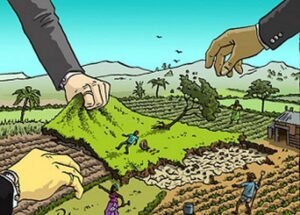A Socio-legal study of the rights of traditional forest dwellers
Written By: Naveen Talawar
Introduction
The relationship between forest-dwelling scheduled tribes and other traditional forest dwellers is historically characterized by coexistence and is considered an integral part of the survival and sustainability of forest ecosystems. It is also a known fact that there exists a spatial relationship between the forest-dwelling tribes and the biological resources in India. This symbiotic relationship has been acknowledged and crystallized as customary rights over land and forest resources. However, these rights were not recognized by the state during the colonial period as well as in independent India
For this reason, the Scheduled Tribes and Other Traditional Forest Dwellers (Recognition of Forest Rights) Act,2006 came into existence. which is a unique Act in setting a change from colonial forest governance to community governance in India and was enacted for the purpose of recognizing and granting the forest-related rights and occupation of forest land in forest-dwelling Scheduled Tribes and other traditional forest dwellers, who have traditionally been living in or depending on the forest land for their legitimate livelihood needs.
This Act also recognizes the community rights or the rights over the community forest resources of the communities in addition to their rights and the Act ensures their right to protect and conserve the community forest resources which is regarded as the significant step in strengthening the diverse process of protection and conservation of biodiversity.
The Main Features of the Act.
- The Act aimed to correct the “historical injustice” done to forest-dwelling peoples due to the antipathy of policies and laws during the colonial and post-Independence periods.
- The Act also grants legal recognition to the rights of traditional forest-dwelling communities.
- The Act strengthens the conservation regime of the forests by ensuring livelihood and food security of the forest-dwelling scheduled tribes and other traditional forest dwellers.
- The development of disadvantaged individuals to reduce poverty and to enhance the economic prosperity of poor households is another feature of this Act.
- Another important feature is to strengthen and encourage regional self-governance amongst the native tribes.
Rights guaranteed to the Forest dwellers
Section 3 of the Act provides for the forest rights of the dwelling scheduled tribes and other traditional forest dwellers, accordingly, they have the following rights :
- The members of a forest-dwelling scheduled tribe or other traditional forest dwellers have the right to hold and live in the forest land under the individual or common occupation for habitation or self-cultivation for livelihood.
- Granted community rights such as nester.
- The right of ownership, access to collect, use, dispose of minor forest produce, etc, which has been collected traditionally within or outside the village boundaries.
- The rights of the dwellers also extend to extracting minor forest produce, grazing areas, etc.
- They have the right to protect, regenerate or conserve or manage any community forest resource which they have been traditionally protecting and conserving for sustainable use.
- They also have the right of access to biodiversity and community right to intellectual property and traditional knowledge relating to biodiversity and cultural diversity.
- If the members of the Scheduled Tribes and Other Traditional Forest Dwellers have been illegally evicted or displaced from the forest land of any description prior to 13th December 2005, they have the right to insitu rehabilitation including alternative land.
Duties of holders of forests rights
Section 5 of the act provides for the duties of forests rights holders, accordingly, they have the following duties ;
- To protect the wildlife, forest, and biodiversity.
- To ensure that the water sources and other ecologically sensitive areas are adequately protected.
- To ensure that the habitat of the forest-dwelling scheduled tribes and other traditional forest dwellers is preserved without affecting their cultural and natural heritage.
Who can claim these rights
These rights can be claimed by the members of the scheduled tribes who primarily reside in and depend on the forests lands for their bonafide livelihood needs. And it can also be claimed by a member or community who has been primarily resided for at least 75 years prior to the 13th December 2005 and the Grama sabha is the authority to initiate the process for determining the nature and extent of rights of these people.
Role of Indian judiciary relating to forest rights.
Fatesang Gimba Vasava v. State of Gujarat is one of the significant cases which explains the impact of the reservation of forests upon tribal habitat. The Gujarat high court in this case laid emphasis on the rights of the tribals to depend on the forest, which was the only source of their livelihood.
Banwasi Seva Ashram v. State of Uttar Pradesh, the supreme court, in this case, passed an order for proper rehabilitation of Banwasis and tribals. The court said that the National Thermal Power Corporation ltd must ensure that the rights of the oustees must be determined in their respective holding and that they were properly rehabilitated and adequately compensated. But even after the strict orders of the court, the rehabilitation policies were not effectively implemented.
In MC Mehta v. Kamal Nath, the supreme court for the first time applied the doctrine of public trust in India. It was found that certain properties such as rivers, seashores, forests, and the air were held by the government in trusteeship for the free and unimpeded use of the general public. Under Roman law, these resources were either owned by no one or by everyone in common. The court, in this case, held that the construction of hotel resorts in the forest areas is considered a non-forest activity.
In Goa foundation v. Conservator of Forests, Forest Dept Panaji, the court observed that the housing colonies planned to be constructed in the forest are were like an eyesore to the people visiting the place.
Conclusion
The Forests Rights Act,2006 is one of the most significant laws enacted in India favoring the tribal and other traditional forest dwellers’ rights over the forest land. The rules for implementing the provisions of the Act were framed in 2008 and further, the rules were amended in 2012. In spite of the Act has recognized the rights of the forest dwellers, there have been critical shortcomings in their implementation. The judiciary has also played a very important role in resolving the conflict between tribal rights and economic development, but it is always the tribals who have suffered the most.
References
- https://www.jstor.org/stable/26479583
- https://www.researchgate.net/publication/
- https://papers.ssrn.com/sol3/papers.cfm?abstract_id=2066295
- http://thelawbrigade.com/wp-content/uploads/2019/06/Anita-Ann-Martina.pdf
- https://www.insightsonindia.com/2021/09/16/the-scheduled-tribes-and-other-traditional-forest-dwellers-recognition-of-rights-act/

Naveen Talawar
Student at Karnataka State Law University’s Law School
BA.LLB(H)
4th Year
Previous Posts
Autism; A Socio-Legal Study On Mental Health Care Laws In India
Legal Aspects Of Wildlife Conservation In India
Power of the Supreme Court to grant Special Leave Petition
Professional Misconduct By Advocates In India – A Critical Study




